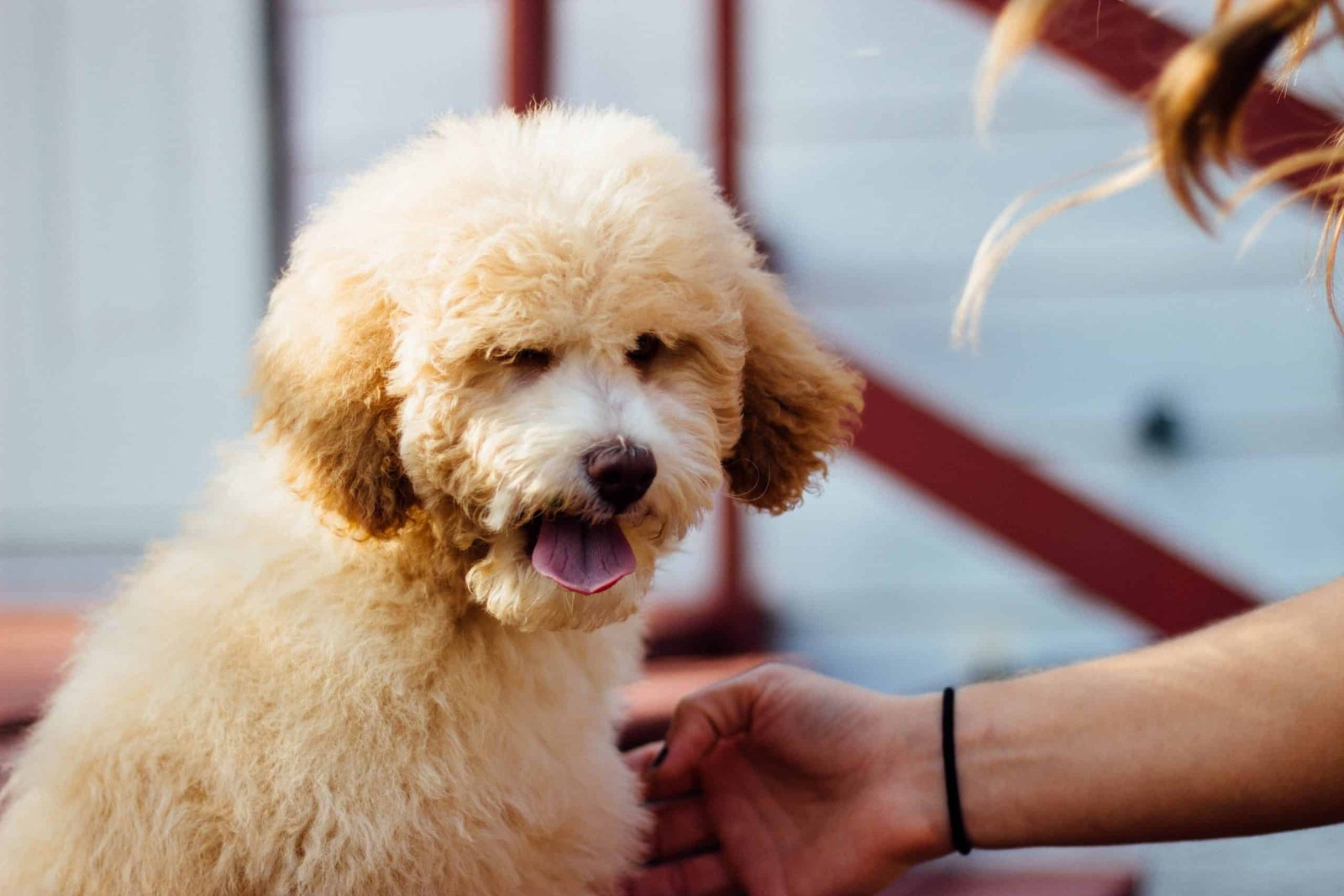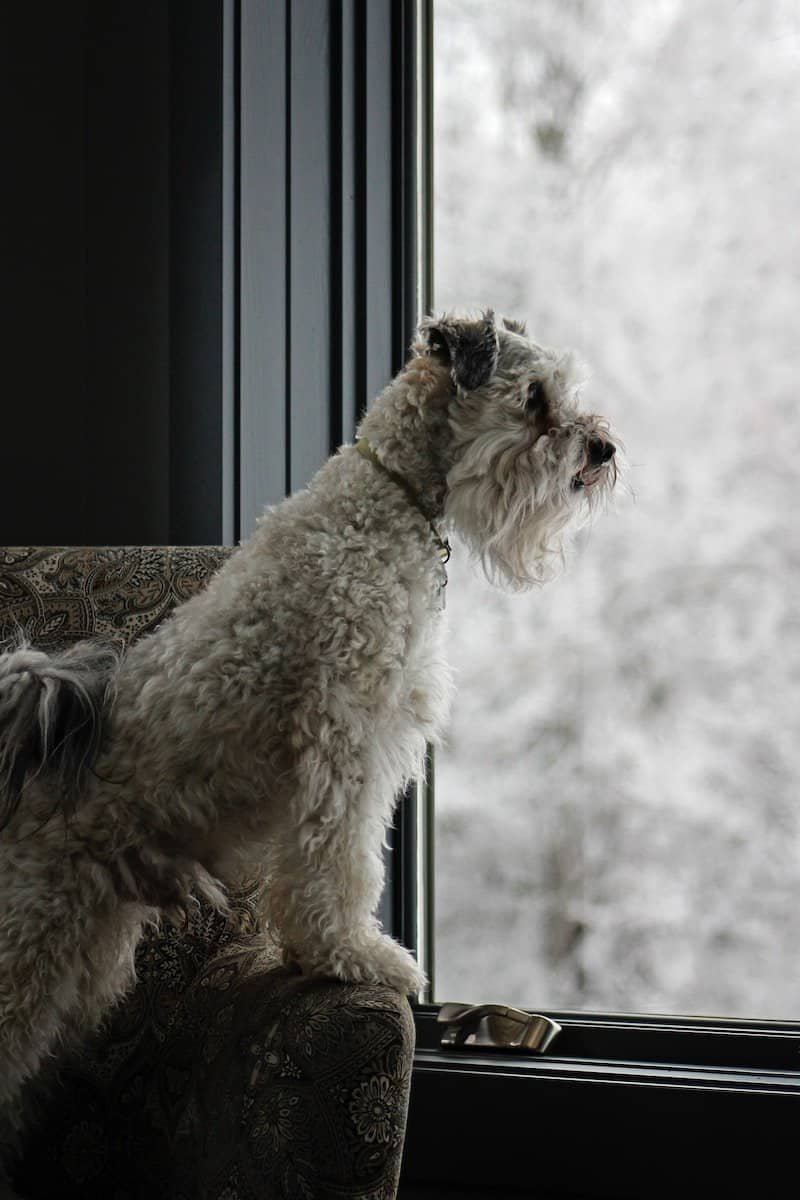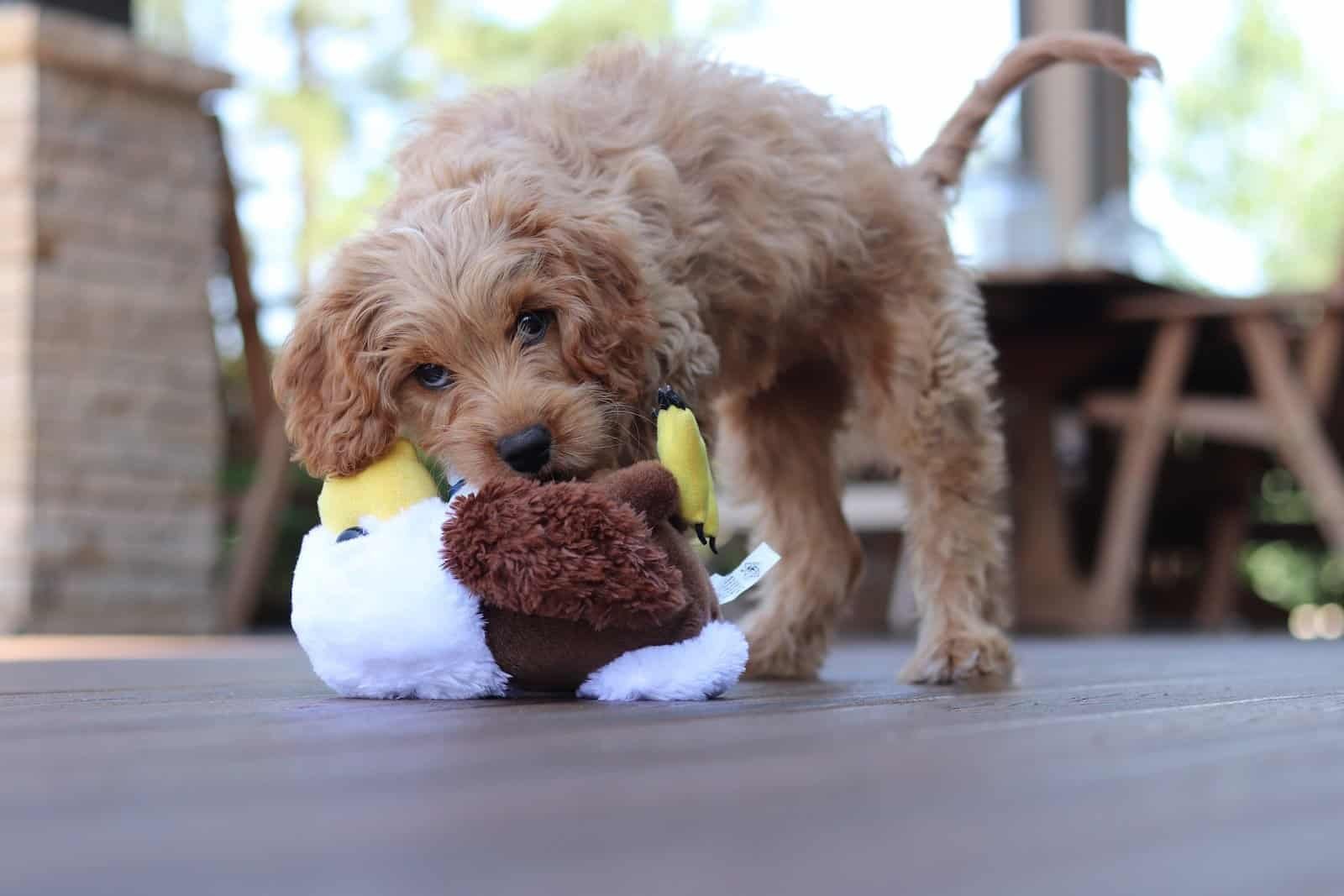Crate training is an essential part of owning a poodle. Not only does it provide a safe and secure space for your furry friend, but it can also help with potty training and preventing destructive behavior. However, simply putting your poodle in a crate is not enough. It is essential to create a comfortable environment that your poodle will enjoy spending time in.
Choosing the right crate is the first step in making your poodle comfortable. A crate should be large enough for your poodle to stand up, turn around, and lay down comfortably. It should also be made of sturdy materials and have a secure latch to prevent your poodle from escaping. Once you have the right crate, the next step is to create a comfortable environment inside.
By following a few simple steps, you can make your poodle’s crate a cozy and inviting space. Providing soft bedding, toys, and treats can make the crate a place your poodle loves to be. Additionally, crate training your poodle can help them feel more comfortable and secure in their space. With patience and consistency, your poodle will come to see their crate as a safe haven.
Key Takeaways
- Choosing the right crate is crucial for your poodle’s comfort and safety.
- Creating a comfortable environment inside the crate can make it a cozy and inviting space for your poodle.
- Crate training your poodle can help them feel more comfortable and secure in their space.
Understanding the Importance of Crate Training
Crate training is an essential part of a poodle’s training needs. It is a behavioral training method that involves teaching your pet to view their crate as a safe and comfortable space. When done correctly, crate training can provide numerous benefits for both you and your poodle.
One of the most significant benefits of crate training is that it can help with potty training. By teaching your poodle to associate their crate with their sleeping area, you can help them learn to hold their bladder for longer periods. Additionally, crates can be an effective tool for keeping your poodle safe when you are away from home or unable to supervise them.
Another important benefit of crate training is that it can help reduce stress and anxiety in your pet. Poodles are known for their high energy levels, and a crate can provide them with a safe space to relax and calm down when they become overstimulated. It can also help prevent destructive behavior, as your pet will have a designated space to play and rest.
It is important to note that crate training should not be used as a form of punishment. Instead, it should be a positive experience for your pet. The crate should be a comfortable and inviting space, equipped with cozy blankets, toys, and treats. You should also gradually introduce your pet to the crate, starting with short periods and gradually increasing the time they spend inside.
In conclusion, crate training is an essential part of your poodle’s training needs. It provides numerous benefits, including potty training, stress reduction, and preventing destructive behavior. With patience and consistency, you can teach your pet to view their crate as a safe and comfortable space.
Choosing the Right Crate
When it comes to choosing the right crate for your poodle, there are several factors to consider. A crate that is too small can cause discomfort and anxiety, while a crate that is too large can lead to accidents and a lack of security. Here are some things to keep in mind when selecting a crate for your furry friend.
Considering the Size of the Crate
One of the most important factors to consider when choosing a crate for your poodle is size. You want to make sure that the crate is large enough for your dog to stand up, turn around, and lie down comfortably, but not so large that they have too much room to move around. A crate that is too big can lead to accidents and make your poodle feel insecure.
Material and Construction of the Crate
Another important factor to consider is the material and construction of the crate. There are several types of crates available, including wire crates, plastic crates, soft-sided crates, and metal crates. Each type has its own advantages and disadvantages, so it’s important to choose the one that best suits your poodle’s needs.
Wire crates are popular because they are lightweight and offer good ventilation, but they can be noisy and may not be as secure as other types of crates. Plastic crates are durable and easy to clean, but they may not provide as much ventilation as wire crates. Soft-sided crates are lightweight and easy to transport, but they may not be as durable as other types of crates. Metal crates are sturdy and secure, but they can be heavy and difficult to move.
Special Features of the Crate
Finally, consider any special features that the crate may have. For example, some crates come with a divider that allows you to adjust the size of the crate as your poodle grows. Others may have a handle for easy transport, a removable tray for easy cleaning, or rounded corners to prevent injury. Think about what features are important to you and your poodle and choose a crate that meets those needs.
In conclusion, choosing the right crate for your poodle is an important decision that requires careful consideration. Keep in mind the size, material, construction, and special features of the crate to ensure that your furry friend is comfortable and secure.
Creating a Comfortable Environment Inside the Crate
A crate can be a safe and comfortable space for your poodle, but it’s important to make sure the environment is set up correctly. Creating a cozy and inviting space for your poodle can help them feel more relaxed and secure in their crate. Here are some tips for creating a comfortable environment inside the crate.
Choosing the Right Bedding
Choosing the right bedding for your poodle’s crate is an important step in creating a comfortable environment. A soft and cozy dog bed can provide your poodle with a comfortable place to rest and sleep. Make sure the bed fits well in the crate and is not too big or too small. Some poodles may prefer a dog mat or blankets instead of a dog bed, so it’s important to pay attention to your poodle’s preferences.
Adding Toys for Distraction
Toys can be a great distraction for your poodle while they are in their crate. Providing your poodle with a Kong or other interactive toy can help keep them entertained and distracted. Plush dog toys can also be a good option for some poodles. It’s important to make sure the toys are safe and durable, and that your poodle cannot chew off and swallow any small pieces.
Providing Water and Meals Inside the Crate
Providing water and meals inside the crate can help your poodle feel more comfortable and relaxed. Make sure to provide fresh water in a spill-proof bowl, and remove the bowl when your poodle is not in their crate. Mealtime can also be a good opportunity to provide your poodle with some mental stimulation. You can use puzzle feeders or other interactive toys to make mealtime more fun and engaging for your poodle.
By following these tips, you can create a comfortable and inviting environment for your poodle inside their crate. Remember to pay attention to your poodle’s preferences and adjust the environment accordingly. With a little effort, you can help your poodle feel more relaxed and secure in their crate.
Crate Training Your Poodle
Crate training is an essential part of housebreaking your poodle. It’s a process that involves teaching your poodle to associate their crate with positive experiences. This way, they’ll learn to love their crate and view it as their safe space. Crate training your poodle can also be helpful in dealing with separation anxiety. In this section, we’ll discuss how to start the training process, how to deal with separation anxiety, and how to progress with the training.
Starting the Training Process
When starting the crate training process, it’s important to choose the right crate size for your poodle. The crate should be large enough for your poodle to stand up, turn around, and lie down comfortably. However, it shouldn’t be too big, as your poodle may use one end as a bathroom and the other as a sleeping area. If you have a standard poodle, an ideal crate size is 48 x 36 inches (122 x 91 cm).
To make the crate comfortable for your poodle, place comfortable bedding in the crate that already has their scent on it. Introduce your poodle to their crate using positive reinforcement. Place treats and comforting items like blankets and favorite toys in the crate. Begin feeding your pup meals in the crate. Every two hours, take your poodle outside.
Dealing with Separation Anxiety
Separation anxiety is a common issue among poodles. To help your poodle deal with separation anxiety, it’s essential to establish a routine and consistency. Gradually increase the duration of time your poodle spends in the crate. Start with short periods and gradually increase the time as your poodle becomes more comfortable.
To help your poodle associate the crate with positive experiences, use positive reinforcement and positive association. Give your poodle treats and praise when they enter the crate. Avoid using the crate as a punishment, as this can create negative associations.
Progressing with the Training
As your poodle becomes more comfortable with the crate, you can start leaving them in the crate for longer periods. This can be helpful in preventing accidents while you’re away from home. However, it’s essential to avoid leaving your poodle in the crate for too long, as this can lead to anxiety and stress.
Brain training for dogs can be helpful in progressing with the training. This involves teaching your poodle new skills and tricks, which can help to keep them mentally stimulated and engaged. It’s also important to be patient and consistent throughout the training process. With time, your poodle will learn to love their crate and view it as their safe space.
In conclusion, crate training your poodle is an essential part of housebreaking and can be helpful in dealing with separation anxiety. It’s important to choose the right crate size, make the crate comfortable, and use positive reinforcement and positive association. Gradually increase the duration of time your poodle spends in the crate and avoid leaving them in the crate for too long. With patience and consistency, your poodle will learn to love their crate and view it as their safe space.
Ensuring Safety and Security
When crate training your poodle, it’s essential to provide them with a safe and secure space that they can call their own. Not only will this help them feel more comfortable and relaxed, but it will also prevent them from getting into any trouble when you’re not around. In this section, we’ll discuss some tips on how to ensure the safety and security of your poodle in their crate.
Choose a Durable Crate
First and foremost, it’s crucial to select a durable crate that can withstand your poodle’s chewing and scratching. Look for a crate made from sturdy materials such as metal or heavy-duty plastic. Avoid crates made from flimsy materials such as wire or mesh as they can easily be destroyed by your poodle.
Use a Divider
If you’re crate training a puppy, it’s recommended to use a divider to make the crate smaller. This will not only help your poodle feel more secure but will also prevent them from using one end of the crate as a toilet and the other end as a sleeping area. As your poodle grows, you can gradually remove the divider to give them more space.
Create a Safe Haven
Make sure to create a comfortable and safe space inside the crate for your poodle. Add a soft and cozy bed, blankets, and toys to make the crate feel like a safe haven. Be sure to choose toys that are safe and durable and avoid anything that could be a choking hazard.
Secure the Crate
If you’re using a crate for air travel, make sure it’s airline approved and securely fastened to prevent any accidents during the flight. Additionally, always make sure the crate is securely fastened when using it in a car to prevent it from moving around and potentially injuring your poodle.
Provide Adequate Ventilation
Finally, ensure that the crate has adequate ventilation to prevent your poodle from overheating. Choose a crate with plenty of ventilation holes or a mesh door to allow for proper airflow. Additionally, never cover the crate with a blanket or towel as this can restrict airflow and cause your poodle to overheat.
By following these tips, you can ensure that your poodle has a safe and secure space to call their own. Remember to always supervise your poodle when they’re in their crate and never leave them in there for extended periods. With patience and consistency, your poodle will learn to love their crate and see it as a safe and comfortable space.
Addressing Common Challenges in Crate Training
Crate training can be a valuable tool for poodle owners. However, it’s not always an easy process. Some common challenges may arise during crate training that can make the process frustrating for both you and your poodle. In this section, we will discuss some of these challenges and provide tips on how to address them.
Dealing with Accidents Inside the Crate
Accidents can happen, even when your poodle is crate trained. If your poodle has an accident inside the crate, it’s important to clean it up thoroughly to prevent any lingering odors that could attract your poodle back to the same spot. Soft-sided crates can be more challenging to clean, so it’s important to invest in a high-quality cleaner that is safe for your poodle and effective at removing odors.
To prevent accidents from happening in the first place, make sure your poodle has had a potty break before being crated. It’s also important to ensure that your poodle has enough space in the crate to comfortably stand up, turn around, and lie down. If your poodle is still having accidents inside the crate, consider taking them out for more frequent potty breaks or adjusting the crate size to better suit their needs.
Addressing Destructive Behavior
Destructive behavior, such as chewing or scratching, can be a sign that your poodle is feeling anxious or stressed in the crate. To address this behavior, make sure your poodle has plenty of toys and chew items to keep them occupied while in the crate. You can also try leaving a piece of clothing with your scent on it in the crate to provide comfort and reassurance.
If your poodle continues to exhibit destructive behavior, it may be necessary to adjust the crate training process. Start by leaving the crate door open and allowing your poodle to explore the crate on their own terms. Once they are comfortable with the open crate, gradually introduce shutting the door for short periods of time, gradually increasing the length of time they spend in the crate.
Managing Whining and Restlessness
Whining and restlessness can be signs that your poodle is feeling anxious or uncomfortable in the crate. To manage these behaviors, make sure your poodle has had a potty break and plenty of exercise before being crated. You can also try placing a clock or white noise machine near the crate to provide a calming background noise.
If your poodle continues to whine or be restless in the crate, it may be necessary to adjust the crate training process. Start by leaving the crate door open and allowing your poodle to explore the crate on their own terms. Once they are comfortable with the open crate, gradually introduce shutting the door for short periods of time, gradually increasing the length of time they spend in the crate.
Crate training requires patience and consistency. By addressing common challenges and adjusting the training process as necessary, you can help your poodle feel comfortable and secure in their crate. Remember to never leave your poodle in a crate with a collar or tags, and always provide plenty of opportunities for bathroom breaks.
Maintaining the Crate and Your Poodle’s Health
Crate training is an effective way to provide your Poodle with a safe and comfortable space to relax and sleep. However, it is important to maintain the crate and your Poodle’s health to ensure that they remain comfortable and happy.
Keeping the Crate Clean
Keeping the crate clean is essential for maintaining your Poodle’s health. Regularly clean the crate with a mild detergent and warm water. Avoid using harsh chemicals that may harm your Poodle. Also, ensure that the crate is well-ventilated to prevent the buildup of moisture and bacteria.
Ensuring Regular Exercise and Play Time Outside the Crate
Poodles are an energetic breed that requires regular exercise and playtime. Provide your Poodle with ample time outside the crate to exercise and play. This will help to prevent boredom and reduce the risk of destructive behavior. A tired Poodle is a happy Poodle.
Balancing Crate Time and Bonding Time
While crate training is essential, it is important to balance crate time with bonding time. Spend quality time with your Poodle outside the crate, such as taking them for walks, playing games, or cuddling. This will help to strengthen your bond and prevent separation anxiety.
Remember, every Poodle is different. Standard Poodles, Toy Poodles, and Miniature Poodles all have different exercise and playtime requirements. Consult with your veterinarian to determine the appropriate amount of exercise and playtime for your Poodle.
In summary, maintaining the crate and your Poodle’s health is essential for a happy and comfortable Poodle. Keep the crate clean, provide regular exercise and playtime outside the crate, and balance crate time with bonding time. By following these guidelines, you can ensure that your Poodle remains healthy and happy while in the crate.
Frequently Asked Questions
If you’re new to crate training, you may have some questions about how to make your poodle comfortable in their crate. Here are some frequently asked questions that can help you get started:
How long does it take for a dog to be comfortable in a crate?
Every dog is different, so there’s no set timeline for how long it will take your poodle to be comfortable in their crate. Some dogs take to it right away, while others may need more time and patience. It’s important to remember that crate training is a gradual process, and you should never force your dog to spend time in their crate if they’re not ready.
Should I put a blanket over my dog’s crate?
Many dogs find it comforting to have a blanket over their crate, as it creates a cozy, den-like environment. However, it’s important to make sure that the blanket is not too thick or heavy, as this can cause your dog to overheat. Additionally, you should never leave your dog unsupervised with a blanket or any other bedding that they could potentially chew or swallow.
Until what age should a dog sleep in a crate?
There’s no set age at which your poodle should stop sleeping in their crate, as every dog is different. However, most dogs can be safely transitioned out of their crate between six and twelve months of age, once they have learned to be calm and well-behaved in the house. It’s important to remember that crate training should always be a positive experience for your dog, and you should never use the crate as a form of punishment or confinement.
Should I lock my puppy in his crate at night?
If your puppy is still very young and not yet fully house-trained, it may be necessary to lock them in their crate at night to prevent accidents. However, once your puppy is able to hold their bladder throughout the night, you can begin leaving the crate door open and allowing them to come and go as they please. It’s important to remember that crate training should always be a positive experience for your puppy, and you should never leave them in their crate for extended periods of time.
How can I make my dog more comfortable in his crate?
There are several things you can do to make your poodle more comfortable in their crate. First, make sure that the crate is the appropriate size for your dog, with enough room for them to stand up, turn around, and lie down comfortably. Additionally, you can provide your dog with soft, comfortable bedding, as well as toys and treats to help keep them occupied.
How do I make my dog less stressed in his crate?
If your poodle is feeling stressed or anxious in their crate, there are several things you can do to help them feel more comfortable. First, make sure that the crate is located in a quiet, low-traffic area of your home, away from any loud noises or distractions. Additionally, you can provide your dog with a calming supplement or pheromone spray, as well as plenty of positive reinforcement and praise when they spend time in their crate.




